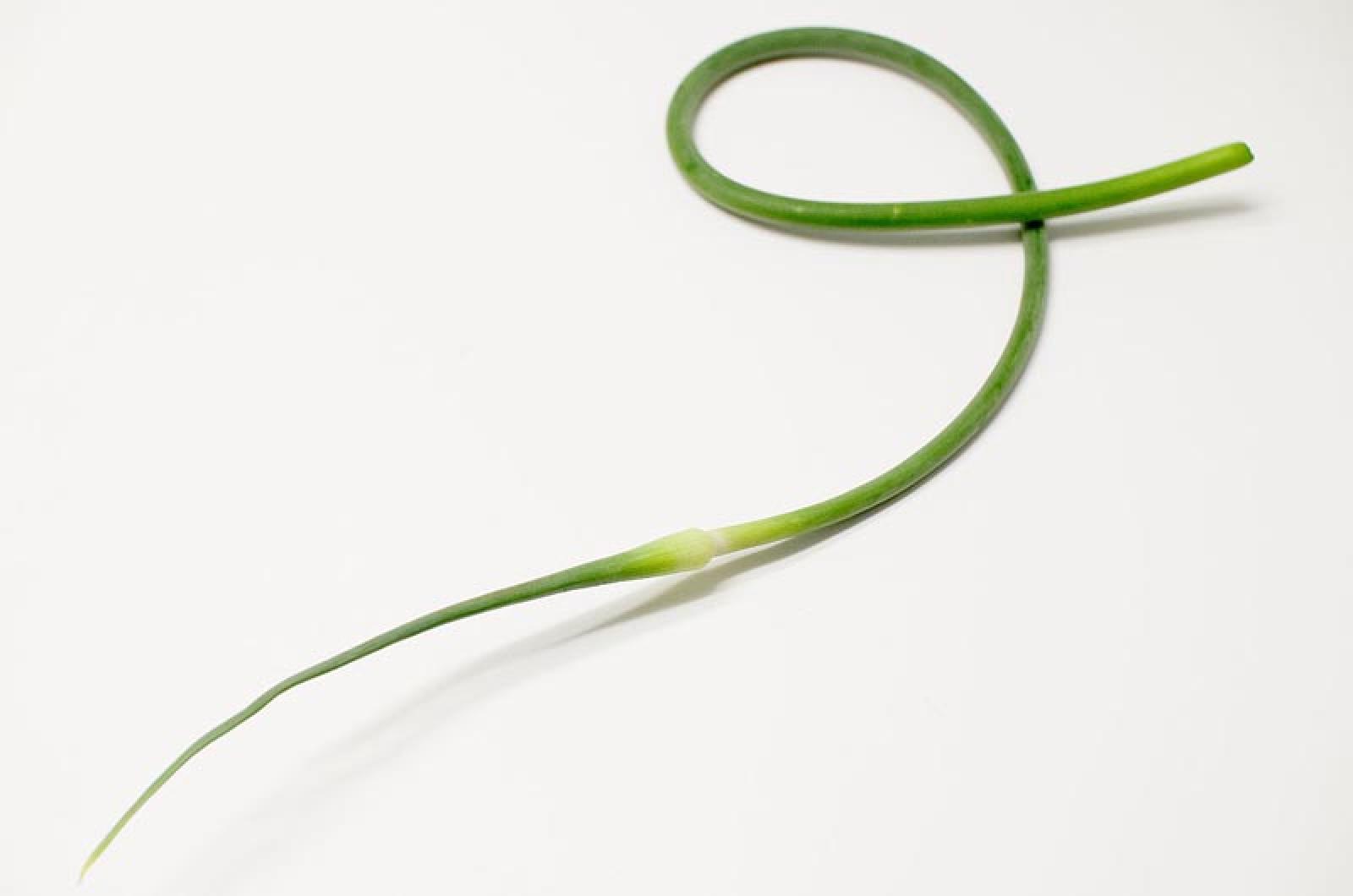Sue Silva had no takers.
A few weeks back, after an afternoon spent thinning her garlic plants, Sue had a large bag of young garlic that she offered to our group of knitters. No one jumped at the offer of spring garlic, so she was planning to put them in her compost.
In my mind, anything grown by Sue or grown on the Island (and these had both going for them) was good as gold. I jumped at the chance and took whatever no one wanted. That turned out to be the entire bag.
Figuring out what to do with these delicacies, also called green garlic, was easy. Two ideas came to mind immediately. The first was to use them like scallions and add them raw to egg or other salads. Definitely delicious.
Then I tried using them like I would leeks. I roasted them in the oven and made the strong and sumptuous-smelling garlicky greens into potato green garlic soup. Also delectable.
Thus, it is no surprise that I am enamored with garlic so early in the season. Even before the bulbs begin to burst, the young stalk and leaves provide me with much pleasure. And now, although the green garlic has disappeared from my life, there is another reason to sing garlic’s praises.
Garlic scapes.
I came to the garlic scape obsession late in life. In fact, I had never seen one of those curious curlicues until I came to the Island. With this plant’s proclivity to coil, it is no wonder that garlic scapes are also called serpent garlic.
These shapely stalks last only a short time. After the young green garlic stage, garlic plants of the Rocambole, or hard-necked varieties (including Carpathian garlic, German red, and Spanish roja, among others), grow a curly flower stalk, or hard neck that ends in a closed bud. In an article in the New York Times, Melissa Clark described them perfectly when she said they were “exuberantly loopy.” If you have seen them, you know exactly what she was talking about!
And when you are done reading Ms. Clark’s article, you can take the advice of Morley Safer, who suggests “with enough garlic, you could eat the New York Times.”
Growers of garlic cut off these terminal tips so they don’t divert energy from the development of the bulb. However, this plant part is a versatile vegetable in its own right. And if you care to plant the bulbette at the end, you will have more garlic in two to three years’ time. Patience is not my best virtue, as I’d rather eat them now and have more immediate gratification.
Recipes abound for these special scapes, which can be consumed raw or cooked. They can be grilled or incorporated into favorites such as pesto or hummus. Treat garlic scapes like you would asparagus and you won’t go wrong!
Garlic is good for body and mind. On the cerebral side, Mrs. W.G. Waters, cookbook author from the turn of the 20th century, believed “Garlic used as it should be used is the soul, the divine essence, of cookery. The cook who can employ it successfully will be found to possess the delicacy of perception, the accuracy of judgment, and the dexterity of hand, which go to the formation of a great artist.”
No matter how you use it, the consumption of garlic any time of year can improve the body in addition to the mind. Les Blank, an American filmmaker said “There’s no doubt that after you eat a lot of garlic, you just kind of feel like you are floating, you feel ultra-confident, you feel capable of going out and whipping your weight in wild cats.” He did not mince words, even if he did mince garlic.
Suzan Bellincampi is director of the Felix Neck Wildlife Sanctuary in Edgartown, and author of Martha’s Vineyard: A Field Guide to Island Nature.




Comments
Comment policy »